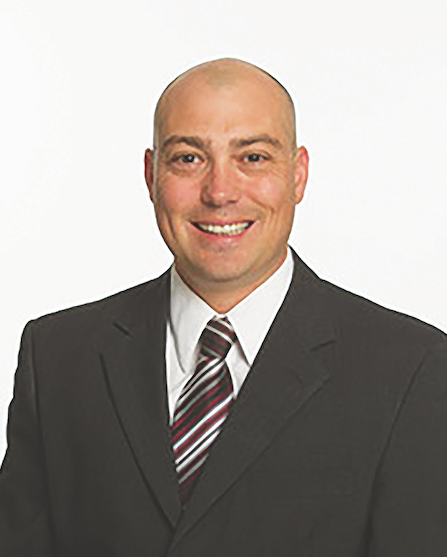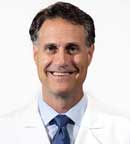Ocular surface disease (OSD) is estimated to affect as many as 49 million people in the United States, with an annual total addressable market (TAM) estimated at $3.02B for 2023. Given an estimated compounded annual growth rate of 7%, a TAM of $4.86B by 2030 is expected.1 The prevalence of dry eye disease (DED) has been found to range from 5.3% to 14.5%, and the prevalence of meibomian gland dysfunction (MGD) from 10.4% to 55.4%. The 5-year incidence of OSD is to be 3.5% in a population 18 years and older and 7.8% in a population 68 years and older.2
There is abundant evidence to support the business opportunities of treating OSD. However, eye-care providers have largely eschewed pursuing an organized, concerted strategy to capitalize on this entrepreneurial opportunity. The obvious question is, “Why?”
Here, we present a case study that demonstrates how Associated Eye Care, a 52-year-old, comprehensive, multi-specialty, multi-site, medical and surgical eye-care practice, developed a successful dry eye clinic.
Looking "Inside-Out"
Associated Eye Care serves pediatric and adult patients in eastern Minnesota and western Wisconsin. Our team of 10 ophthalmologists and 10 optometrists have been treating patients with OSD every day since our inception. However, when we looked at the actual care provided by each individual provider, we found a sobering amount of variation from provider to provider. While some rely on special testing, others did not. Some used punctal plugs regularly, but others did so rarely. While some recommend only over-the-counter drops, others ordered prescription therapeutics.
This finding stands in sharp contrast to how other diagnoses are managed under the Associated Eye Care banner, including glaucoma and AMD.
A review of the available literature, coupled with conversations with colleagues from other practices, has yielded useful commonalities:
- Most providers in group practices treat OSD, but there is no accepted “best practice” treatment protocol within groups.
- Providers are more or less interested in managing patients with OSD, but some consider managing patients with OSD to be less professionally satisfying than treating patients with more sight-threatening problems, including those that require surgical intervention.
- Most practices have not internally or externally sought a provider to be the leader of an OSD effort or service line.
- Groups that may want to start a dedicated OSD service line or dry eye clinic may not know where or how to start.
Developing a Dry Eye Clinic
With approximately 100,000 annual clinic encounters, an estimated 5,000 to 15,000 of the patients seen annually at Associated Eye Care have diagnosable and treatable OSD. An unknown percentage go untreated or undertreated.
Providers in the practice reasoned that patients could be better served by a well-organized model for managing OSD with an evidence-based, best practices approach. It was decided that this service line, hereto referred to as the Dry Eye Clinic (DEC), would best be led by an optometrist who is interested in, experienced with and dedicated to the field of OSD. This provider would partner with leadership within the group to create the business and clinical programming, and act as medical director of the DEC.
Of note, each internal patient referred to the DEC would also see their primary eye-care provider for an annual comprehensive examination. Therefore, it was believed that referral to the DEC would not cannibalize the practices of the other providers, but rather would result in more total patient visits from the existing patient pool.
The optometrist taking on the role of medical director would see his practice transition from comprehensive to OSD-only over an expected period of 2 to 3 years. He would be supported with one half day of administrative time per week to develop and direct the program.
Key components of the business plan execution included the following:
- All providers (owners and non-owners) in the practice were polled for their support of the initiative.
- A business plan was developed with support from practice leadership.
- The practice’s president, a practicing ophthalmologist, would serve as the business development liaison to the practice owners.
- A capital asset allocation of $13.8K was approved for the acquisition of required diagnostic and treatment technologies to outfit two locations. This included TearCheck (ESW Vision) diagnostic devices, InflammaDry (Labtician Ophthalmics), ScoutPro osmolarity system (Trukera Medical), IProX (MDelite) for intense pulsed light treatments and TearCare (Sight Sciences) thermal treatment devices.
- Specialized staff were developed and trained.
- A specialized and targeted digital social media promotion strategy was developed.
- A two-year business plan was produced, including all expected asset and operating cash investments, with assumptions regarding expected financial returns performance.
Summary Results
At the 24-month point of program development, 70% of the medical director’s patient care productivity is dedicated to OSD. Operational performance metrics are summarized here. Where useful, results are adjusted to reflect an assumed 1.0 full-time equivalent allocation of specialized optometrist time to the DEC:
- Patient encounters annualized = 3535.
- Diagnostic tests per year = 8,685
- Treatment procedures annualized = 2,256
- Annualized collections of $1.05 million.
- The average collection rate per OSD work relative value unit (WRVU) to date is 13.5% higher than that of the average for all other OD-produced WRVUs in the practice (including all ancillary services allocated).
- 55% of CPT coding at a level 4.
- Top three payer classes are Medicare (45%), commercial ($43%), self-pay (7%).
- New patient sex and average age distribution: female (68%, 64 years); male (32%,
57 years).
Observations and Lessons Learned
The development of a DEC has led to a number of advantages to our patients, staff and providers. Our patients have benefitted greatly from an overall improvement in OSD management. Also, we have seen an increase in the number of patients served by the practice.
Targeted, digital marketing is increasing the number of new patients, as well as the geographic reach of the practice. A portion of new patients satisfied with their dry eye care have also been willing to use other clinical services and purchase eye wear from the practice. Existing patients report enhanced satisfaction with the practice. Providers within the practice now have the option to refer patients internally for OSD care, or continue to manage OSD patients themselves, and refer selectively for specialized diagnostics and treatments.
Having a dedicated optometrist serving as the champion of OSD programming for the practice has been imperative, especially given the need for the implementation of evidence-based best practices for diagnostics and treatments as well as ongoing, comprehensive clinical care, utilizing specialized diagnostic and treatment options.
Innovations were required to the staffing model for the DEC. Traditionally, Associated Eye Care providers have shared techs and assistants from a common pool. However, we found more success with a tech team to work only in the DEC, who received specialized training in OSD diagnostics and therapeutics to make them much more adept at patient flow and service management.
Conclusion
As OSD programming grows, it is expected that an additional OSD-specialized optometrist will be added. Future plans also call for the addition of an ocular aesthetician to provide eye lid and lash hygiene as well as handling maintenance procedures such as intense pulsed light and thermal treatments. Expanding activity with clinical trials and related clinical studies is expected, as is assisting other eye care practices with the development of OSD programming and management.
Internal evaluations of the progress with OSD programming and the DECs at Associated Eye Care indicate success with the idea and the plan. OM
References
1. Fortune Business Insights. U.S. Dry Eye Syndrome Market Size, Share & COVID-19 Impact Analysis, By Product (Anti-inflammatory Products {Cyclosporin, Corticosteroids, and Others}, Artificial Tears and Lubricants, and Others) By Distribution Channel (Hospital Pharmacies, Retail Pharmacies, Online Pharmacies, and Others), and Forecast, 2023-2030. https://www.fortunebusinessinsights.com/u-s-dry-eye-syndrome-market-107538. Accessed August 15, 2024.
2. McCann P, Abraham AG, Mukhopadhyay A, Panagiotopoulou K, Chen H, Rittiphairoj T, Gregory DG, Hauswirth SG, Ifantides C, Qureshi R, Liu SH, Saldanha IJ, Li T. Prevalence and Incidence of Dry Eye and Meibomian Gland Dysfunction in the United States: A Systematic Review and Meta-analysis. JAMA Ophthalmol. 2022;140:1181-1192.











